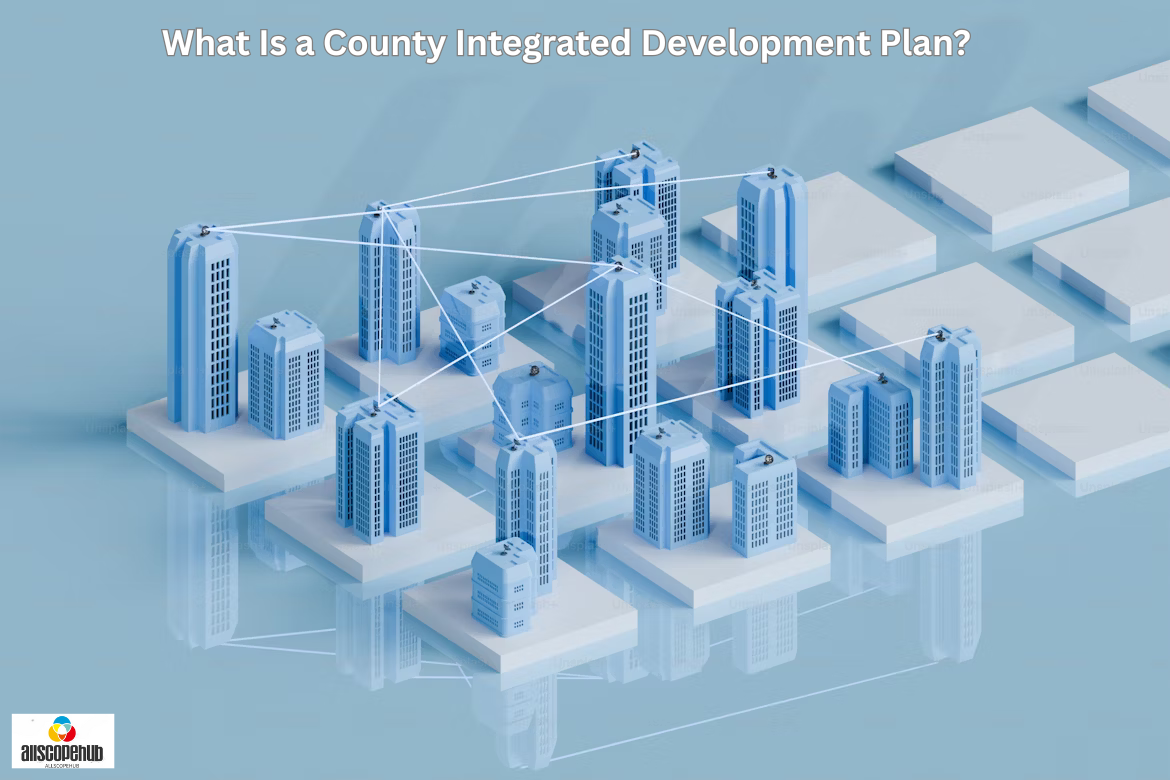The Mindset Behind Every Great Movement: Understand. Relate. Act
We’ve worked with local development teams, planners, and community leaders for years, helping shape more innovative strategies for public engagement and planning. From all that work, one thing stands out: most people don’t know how local government decisions get made. That’s where we come in.
If you’ve ever driven past a half-finished road or wondered why a health center never opened in your town, you’re not alone. The truth is, most of those decisions trace back to something called a County Integrated Development Plan — a tool many people have never heard of, even though it affects their daily lives.
In this guide, we’re not going to bore you with government speak. Instead, we’re going to show you what is County Integrated Development Plan , why it matters to you, and how you can be a part of it. Sounds good? Let’s dive in.
What Is a County Integrated Development Plan?
Think of it as your county’s big-picture blueprint.
A County Integrated Development Plan, or CIDP, is a document that guides how county governments plan and spend over five years. It covers everything from health centers and schools to roads, agriculture, water access, and more.
This plan isn’t just wishful thinking. It’s an official tool that links dreams to budgets. It decides what gets funded, built, or delayed. Every project, every development agenda, begins here.
The concept first took root in places where local governments needed to be more accountable. The goal? To involve everyday people — like you — in choosing what matters most in their communities. Instead of being told what’s good for you, you get a voice.
CIDPs are mandatory in some countries, like Kenya, and widely adopted in many others. They form part of national laws that support decentralization, giving counties more power and people more say.
Many counties in the U.S. also follow similar frameworks. For example, Arlington County in Virginia provides a detailed guide on comprehensive planning that mirrors the purpose and structure of CIDPs. You can explore their Comprehensive Plan Essential Guide (2023) to see how a strategic, community-driven document guides everything from transportation to environmental sustainability.
How Does a County Integrated Development Plan Work?
Now, you’re probably thinking — okay, but how does it happen?
Here’s the basic process:
- The county government holds public forums to hear from citizens.
- Experts assess local needs using data and feedback.
- Priorities are ranked, and budget estimates are created.
- Drafts are published for public review and input.
- County assemblies pass final plans.
Once approved, the CIDP guides all government actions for the next five years. Budgets are aligned with the plan. New projects must fit into it. Monitoring is tied to it. And yearly updates help adjust for changes.
You can think of it like this: the CIDP is the county’s script. Without it, the actors — politicians, planners, and workers — don’t know their lines.
Who Creates the County Integrated Development Plan — and Who Gets a Say?
Here’s the part most people miss: CIDPs aren’t written by a few officials behind closed doors.
Yes, county executives lead the process. But they’re required to include public voices. This means you — the shopkeeper, the student, the farmer, the teacher — you’re part of the team.
There are scheduled town halls and forums where you can show up, speak out, and ask questions. You can even submit written suggestions if you can’t attend in person.
It’s not just symbolic. Public input must be recorded and included in the final document. That’s the law in many counties. But laws only work when people use them.
When citizens don’t show up, the loudest voices often represent narrow interests. But when you do, things shift. Decisions get more balanced. Needs become clearer. And long-forgotten villages finally get roads, clinics, or clean water.
Why Is a County Integrated Development Plan Important to Citizens Like You?
This isn’t just about planning. It’s about real change in your life.
CIDPs decide what services come to your area. They prioritize which schools are built, which health centers get medicine, and which roads get fixed first. They even affect job creation and training programs.
If something’s missing in your community, chances are it wasn’t in the last plan — or it was too low on the list.
This is your chance to move it higher.
Maybe you want better maternal care services—or more youth job programs. Or maybe, like many, you just wish for reliable electricity and clean water. These aren’t luxuries. They’re needs — and CIDPs help make them happen.
Being informed means knowing what’s in your county’s plan. Being active means showing up and pushing for the changes you care about.
Challenges in Implementing County Integrated Development Plans
Now, let’s be real. Just having a plan doesn’t mean everything works perfectly.
Counties face real challenges. There’s limited funding. Some departments don’t coordinate well. Political interference can delay or distort progress. Sometimes, people promise too much and deliver too little.
Other times, the problem is silence — when citizens don’t hold leaders accountable or forget what was promised.
CIDPs are only as strong as their follow-through. And follow-through requires pressure. That’s where civil society, media, and ordinary citizens come in.
The U.S. Environmental Protection Agency (EPA) offers a helpful Integrated Planning Framework for counties dealing with complex infrastructure needs, balancing environmental responsibilities with public services — a concept similar to CIDPs.
An evil plan can be avoided. A good plan can fail. But a bright, realistic plan backed by an informed public? That’s where change begins.
How You Can Influence Your County Integrated Development Plan
You don’t need to be a politician or planner. You just need to care — and speak up.
Start by finding out when your county holds planning forums. They usually happen before a new CIDP cycle begins. Show up. Bring your questions. Share your story.
You can also:
- Join a residents’ group that engages in civic matters.
- Review the draft plans once published — they’re public documents.
- Write down concerns and submit them officially. Many counties now take emails or online forms.
- Follow up on promises. If a market was promised in your area and it’s not there, ask why.
Your experience matters. Your voice adds value. When you take part, you shift the balance toward fairness.
And remember — this isn’t just about now. A good CIDP affects the next five years, sometimes even more. Your kids will walk the roads planned today. Your community will live with these decisions for a long time.
You’re Not Just a Resident — You’re a Co-Author of the Future
Let’s step back for a second.
You started this article, probably curious or confused. Maybe you thought, “It’s just another government term.” But hopefully, by now, you see it differently.
A County Integrated Development Plan isn’t just a document. It’s a promise — one that includes your hopes, your needs, and your voice.
We believe in that promise. We believe in citizens being more than observers. And we think you have a right to know what’s being planned in your name.
So here’s our ask: read your county’s plan. Attend the following forum. Ask a question. Bring a neighbor. Be the person who cares, and let that care show.
Change doesn’t begin with policies. It starts with people — just like you.
Let’s Shape the Future Together
If you’re ready to be part of something bigger than yourself — if you want to turn frustration into action, questions into answers — start now.
We’re here to support you, inform you, and stand with you as you shape a better tomorrow.
Because the next five years? They belong to you.



